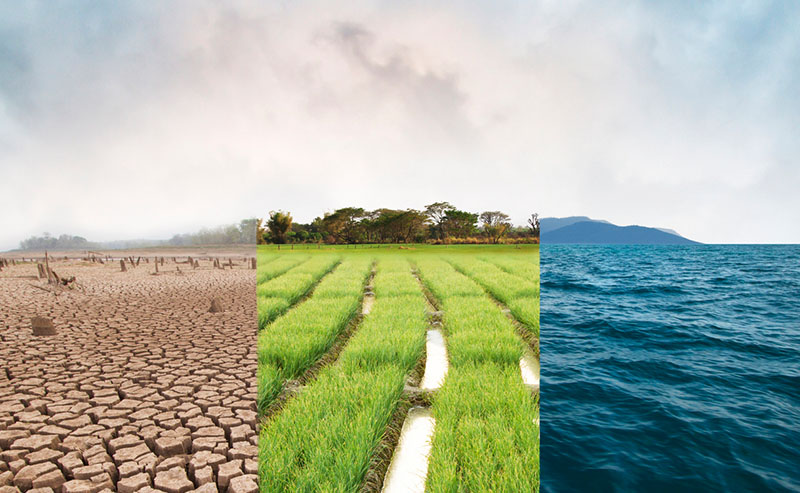Climate change. For years, scientists have studied its causes and effects, some warning of its long-term consequences. Today, climate change remains a hot topic (no pun intended) as emergency managers across the country must contend with its commonly associated hazards. Among them are more intense storms, frequent heavy precipitation, heat waves, drought, extreme flooding, and higher sea levels.
No matter where you stand on the subject of climate change, or where you are on the map, one or more of these hazards most likely poses risk to the state, county, tribal or territorial government you serve.
The Federal Emergency Management Agency (FEMA) believes that regardless of why the climate is changing, emergency managers have to be poised to respond to disasters and support preparedness efforts nationwide.
A key part of that preparation includes the development of a Hazard Mitigation Plan (HMP). These plans, as everyone in the planning community knows, include (at a minimum), 1) a risk assessment, 2) a capability assessment, 3) the mitigation strategy, and 4) plan maintenance procedures. HMPs must be updated every five years, and approved by FEMA, in order for their owners to qualify for certain, pre-disaster federal funding.
In 2015, and as explained by the Council of State Governments, FEMA put in place a requirement that state disaster plans would only be approved (thereby making the state eligible to receive federal funding for pre-disaster mitigation projects designed to build resilience) if they addressed the projected effects of climate change on hazard risks. In other words, whereas earlier states were using historical data to predict risk, the new requirements want states to also consider the probability of future challenges posed by climate change.
Note the key phrase there—if they addressed the projected effects of climate change on hazard risks. That means that HMPs do not need to use the term “climate change,” much less attempt to explain its cause(s). It just means that the plan must include a summary of the probabilities of future hazard events as well as changing future conditions.
Even FEMA removed references to climate change from its own strategic planning document in 2018. Within it, there are no mentions of global warming, sea level rise, extreme weather or any other impact of rising surface temperatures. In fact, the document cites only cybersecurity and terrorism as emerging threats.
Specifically, the document reads: “Disaster costs are expected to continue to increase due to rising natural hazard risk, decaying critical infrastructure, and economic pressures that limit investments in risk resilience. As good stewards of taxpayer dollars, FEMA must ensure that our programs are fiscally sound. Additionally, we will consider new pathways to long-term disaster risk reduction, including increased investments in pre-disaster mitigation.”
There’s no doubt about it, climate change will continue to be studied, and of course, debated, for years to come. The best thing you can do as an emergency planner is to keep your focus on preparedness and resilience, regardless of the hazards, or their possible causes. Follow FEMA’s guidelines on the subject, and write a hazard mitigation plan that specifically addresses the risks and vulnerabilities within your state, county, tribe or territory. Just as important, review the plan on a regular basis and keep its contents current.
Want to read more on the subject? Download BOLDplanning’s popular White Paper entitled “Seven Key Reasons You Need a Current and Rock-Solid Hazard Mitigation Plan.” Its contents should prove meaningful as you seek expert guidance on this important topic.






